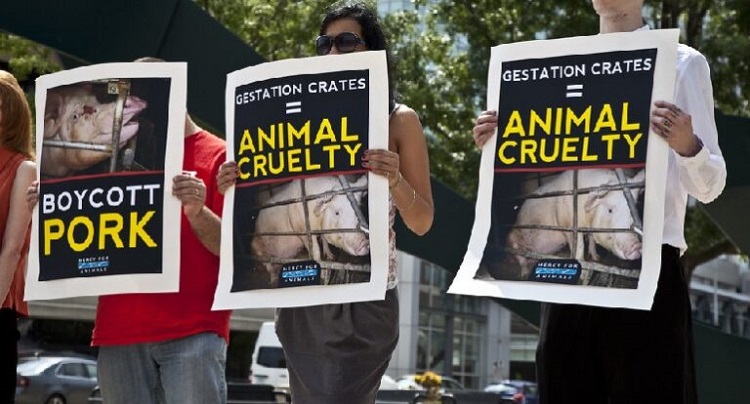In the intricate intersection of law, morality, and animal welfare, the debate surrounding anti-cruelty laws continues to provoke nuanced discussions. These laws, ostensibly designed to protect animals from harm and suffering, simultaneously raise poignant questions about the underlying motivations that inform their existence. Are these statutes primarily a reflection of humanity’s ethical obligation toward their fellow sentient beings, or are they more about regulating human behavior in relation to animals? This inquiry delves into the legal and moral dimensions of anti-cruelty laws, revealing the complexities that define this field.
At their core, anti-cruelty laws are statutes intended to prevent the mistreatment of animals. They encompass a range of legislations, from forbidding gratuitous violence against pets to regulating the conditions of livestock farming. Legalities often stipulate that animals must be provided with adequate care, shelter, and sustenance. The primary rationale behind these laws is a burgeoning recognition of animals as sentient beings capable of suffering, akin to humans. However, upon closer examination, this presumption of sentience raises significant questions about the broader purpose of these protective measures.
From a legal perspective, anti-cruelty laws function primarily as a mechanism for societal governance. They contemplate the implications of cruelty not solely on animals but notably on human beings. Anti-cruelty statutes can be traced back to societal norms that equate the humane treatment of animals with the moral standing of civilization itself. When violators transgress these norms, it is not merely the animal that suffers; the act reflects poorly on societal morality. In this manner, such laws serve to regulate human conduct, establishing a moral benchmark for behavior.
Additionally, anti-cruelty laws often establish a precedent where the criminalization of animal abuse can lead to more severe adjudications of human violence. Statistical analyses indicate a notable correlation between animal cruelty and other forms of violence, suggesting that individuals who commit acts of cruelty against animals often turn to human victims. The implication here is that, while animals may ostensibly be the subjects of protection, the laws are simultaneously conduits for protecting humans from the fallout of a morally compromised society.
Legally, the enforcement of anti-cruelty laws varies dramatically between jurisdictions. In some regions, stringent measures warrant heavy penalties for offenders, while others employ lenient regulations that lead to minimal repercussions. The effectiveness of these laws can be further undermined by socio-economic factors, leading to disparities in enforcement. For instance, the seriousness with which a case of animal cruelty is treated can depend heavily on geographic location, availability of resources, and societal attitudes towards animals—a reflection of the fluctuating tides of cultural values that govern these laws.
When viewed through a moral lens, the justification for anti-cruelty laws takes on additional layers of complexity. The moral argument for these laws posits that humans have an ethical obligation to mitigate suffering, transcending species boundaries. Proponents of animal rights argue that moral consideration should extend to all sentient beings, thus rendering animal cruelty a moral abomination. This perspective champions the view that the mere existence of anti-cruelty laws signifies a societal obligation to advocate for the voiceless, reflecting the values of empathy and compassion.
However, the moral perspective also engenders critique. Some argue that the legislation is inherently flawed, prioritizing the welfare of animals only when it aligns with human interest. For example, animal welfare laws that protect pets in affluent households often neglect farm animals subjected to inhumane conditions in agribusiness settings. This inequity highlights the anthropocentric bias embedded within the legal frameworks, raising ethical questions about whose interests are genuinely being served. Are animals being afforded rights, or are their protections merely a reflection of human sensibilities?
Moreover, a debate exists regarding the terminology utilized in anti-cruelty laws. Words like “inhumane” and “cruel” are laden with moral judgments that can shift in meaning based on cultural contexts and societal changes. This malleability can complicate enforcement, as legal definitions may not universally capture the spectrum of animal suffering.
Furthermore, enforcement necessitates resources and a keenly developed understanding of both animal behavior and welfare standards. Judicial systems that prioritize punitive measures often overlook rehabilitative opportunities for offenders, missing the chance for transformative change. The interplay of education and legislation may foster a more comprehensive understanding of animal rights and welfare, promoting a shift in societal attitudes toward cruelty.
In conclusion, while anti-cruelty laws are crafted with the intent to shield animals from harm, their implications traversing both the legal and moral spheres unveil a multifaceted endeavor. While they serve a vital role in instigating a societal shift toward greater compassion for other sentient beings, they, too, mirror humanity’s self-interest in maintaining a civil and humane society. Thus, the question persists: Are these laws truly for the protection of animals, or do they serve a self-serving purpose for humanity? The answer may lie in an evolving understanding of our relationship with the animal kingdom and the legal structures that govern our treatment of it.








